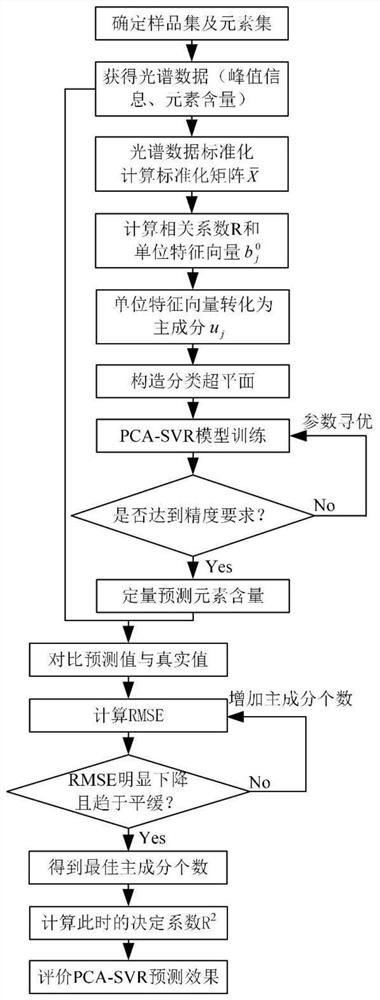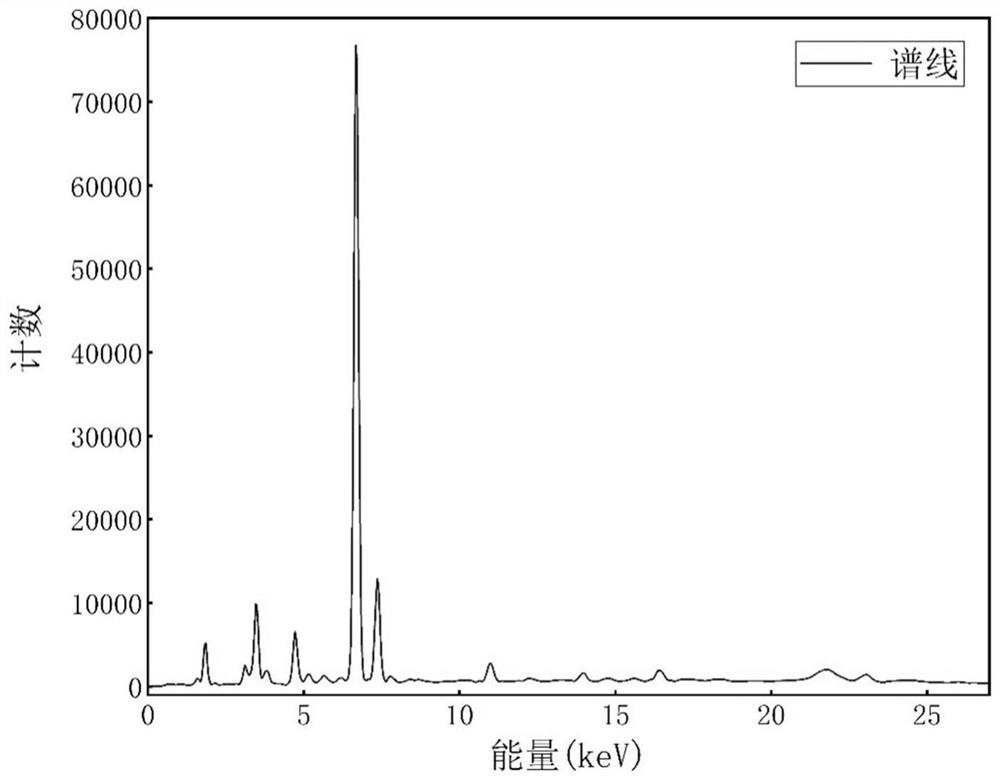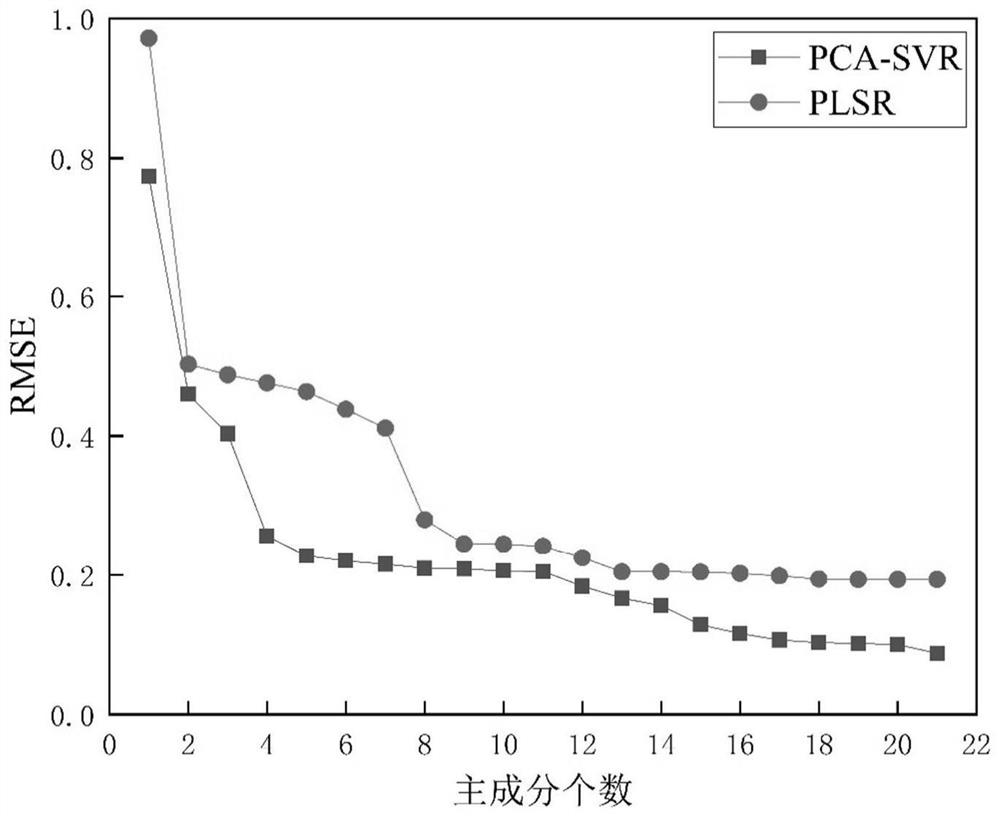Quantitative analysis method of xrf elements based on pca-svr
A PCA-SVR, quantitative analysis technology, applied in the analysis of materials, material analysis using wave/particle radiation, measurement devices, etc., can solve the problems of element spectral line peak count overlap, element information uncertainty, lack of data verification, etc. , to achieve the effect of intuitive results, rapid quantitative prediction, and high detection accuracy
- Summary
- Abstract
- Description
- Claims
- Application Information
AI Technical Summary
Problems solved by technology
Method used
Image
Examples
Embodiment Construction
[0045] The specific embodiments of the present invention and the working principle are described in further detail below in conjunction with the accompanying drawings.
[0051]
[0054]
[0055]
[0056]
[0059]
[0061] Step 4: XRF spectral data normalization. Convert matrix X of original size n×m
[0062]
[0063]
[0064]
[0065]
[0068]
[0071]
[0074]
[0075] In the formula, i=1,2,...,n, j=1,2,...,m, is the row vector of the i-th row in the standardized matrix.
[0077]
[0079] Step 9: In order to control the calculation speed and reduce the error in the sample training, a penalty factor C and relaxation are introduced
[0080]
[0082] Step 10: Use the grid search-based cross-validation method to optimize parameters, and train the PCA-SVR model. pass
[0083]
[0086]
[0090]
[0091]
[0094] The traditional Partial Least Squares Regression (PLSR) method and the standard soil based on the PCA-SVR method of the present invention will be used
[0096]
[0098] The ab...
PUM
 Login to View More
Login to View More Abstract
Description
Claims
Application Information
 Login to View More
Login to View More - R&D
- Intellectual Property
- Life Sciences
- Materials
- Tech Scout
- Unparalleled Data Quality
- Higher Quality Content
- 60% Fewer Hallucinations
Browse by: Latest US Patents, China's latest patents, Technical Efficacy Thesaurus, Application Domain, Technology Topic, Popular Technical Reports.
© 2025 PatSnap. All rights reserved.Legal|Privacy policy|Modern Slavery Act Transparency Statement|Sitemap|About US| Contact US: help@patsnap.com



